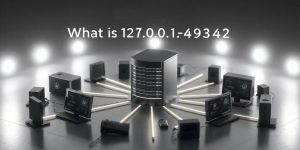
Empathy, the capability of knowing and sharing the feelings of another, is normally regarded as a vital element of human link and social conformity. Moreover, the nuanced outlook of emotional perspective is not without its drawbacks. The empathy bait or trap, a complicated interaction of biases in our sentimental perception, can send us to a way where good purposes may unintentionally result in confusion, stereotyping, and even impairment. Navigating these empathy biases needs a deep knowledge of the elements at play, in addition to an assurance to support real and comprehensive empathy.
Finding Out The Nature of Empathy
Empathy is a versatile build-up surrounding emotional, cognitive, and sympathetic dimensions. Cognitive empathy includes knowing another individual’s prospect, emotional empathy includes sharing their emotions and feelings, and responsive empathy includes taking action to lessen their suffering. Whereas empathy is normally regarded as a positive feature, it becomes a pitfall when impacted by biases that deform the precision and extent of our knowledge.
The Growth of Empathy
The readiness to link with others, to experience their happiness and pains, has long been a symbol of mankind. Currently, however, this bias has grown into a tendency of over-empathizing. We get ourselves flown by stories, even when they are undistinguished or baseless. The aspect of empathy has been modified, emerging from an authentic emotional link to a nearly automatic reply.
What is Empathy Bias?
An empathy bias is a disintegration or decline in empathy (the capability of recognizing, understanding, and sharing another’s views and sentiments) where it might differently be expected to take place.
Empathy Bias and the Absence of Critical Analysis
This new movement of empathy carries with it a considering side effect: an absence of critical analysis. By holding empathy to the point of redundancy, we risk giving up our judgment. The longing to empathize can mask our ability to assess details, guiding us through a path of empathy bias and even misinterpretation.
Different Types of Biases in Emotional Understanding
1. Cultural Biases
Cultural backdrops essentially shape our emotional experiences and interpretations. The empathy trap grows when we undertake our cultural patterns onto others, supposing that their emotional replies must reflect our own. This can lead to misconceptions, as diverse cultures may prefer and show emotions in different ways.
2. Stereotyping or Regulating
Prepossessed stereotypes and notions depending on factors like gender, race, or socioeconomic position can hide our ability to empathize correctly. Stereotypes can make a narrow lens through which we see others, concealing the specific and diverse emotional outlooks that people from different backgrounds navigate.
3. Confirmation or Validation Bias
Confirmation or validation bias, the tendency to look out for details that strengthen our present beliefs, can also impact emotional knowledge. If we hold definite preconceptions regarding someone, we may carefully focus on proof that holds our views while discarding information that questions them.
4. Empathy Tiredness
Continuous exposure to others’ emotional trials can lead to empathy fatigue, where people become disinterested or emotionally overpowered. This tiredness may result in a declined capacity to empathize, prospectively leading to disrespect or indifference.
5. Implicit or Constant Bias
Implicit biases, blacked-out or unconscious attitudes, or stereotypes that impact our knowledge and behavior can flow into our empathetic replies. These biases, generally shaped by societal influences, may add to unforeseen inequity and hide real connections.
How to Lessen Emotional Bias?
Emotional bias can also be decreased by employing objective conventions and information to make decisions, assess performance, and give feedback. Objective criteria and details are dependent on facts, proof, and standards apart from feelings, opinions, or choices.
Handling the Empathy Trap
1. Nurture Cultural Competence
To overcome cultural inclinations or biases, it is essential to nurture cultural know-how. This includes enlightening oneself regarding diverse cultural standards, being involved in cross-cultural practices, and staying open to different outlooks. By accepting and respecting cultural diversity, we can improve the precision of our empathetic replies.
2. Confront Stereotypes
Confronting and challenging stereotypes needs self-consideration and assurance to break free from fixed presumptions. Actively looking out for counterexamples that challenge stereotypes can widen our knowledge and support more comprehensive empathy.
3. Transform Perspectives
To reverse confirmation bias, purposely reveal yourself to different prospects and opinions. Get involved in conversations with people who hold diverse views, go through literature from different sources, and stay open to regulating your knowledge based on the latest data.
4. Self-care for Empathy Tiredness
Identifying the fundamentals or signs of empathy tiredness is important for keeping up an active, empathetic capacity. Practicing or exercising self-care, fixing up boundaries, and looking for support when required can assist in preventing exhaustion and ensure a continuous capacity to empathize.
5. Uncover Implicit Biases
Confronting and acknowledging implicit biases needs open-ended self-check. Tools, for example, implicit bias checks can increase the perception of senseless enmities or prejudices, allowing people to promptly work towards upholding their effect on empathetic replies.
Final Words
Empathy is no doubt a significant human feature, overpassing gaps and restoring wounds. But similar to any strong tool, it should be operated with care. Holding empathy for the benefit of inclusion, even when it is ill-advised, can lead to a society where critical or analytical thinking is obscured by emotional response.
On the other hand, the empathy trap represents a challenging landscape that needs continuous self-information and willful efforts to overthrow biases. Navigating this outlook includes acknowledging the presence of empathy bias, knowing their inceptions, and eagerly working to break them up. By clarifying an authentic, overall empathy that goes beyond social, cultural, and individual boundaries, we can build up and nourish deeper links, break down patterns or stereotypes, and add to a more indulgent and considerate world.
In the end, it is not related to excluding empathy but keeping a balance. Logic and emotions must walk together, leading us toward a perspective where empathy improves our lives without settling our ability to assess, think, and anticipate. So, to help you maintain this balance on an organizational or individual level, Newrisitcs can help in every way possible.



